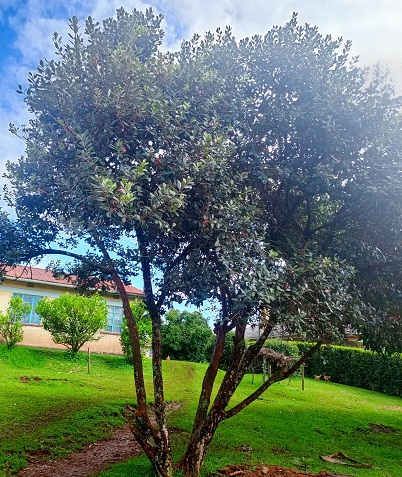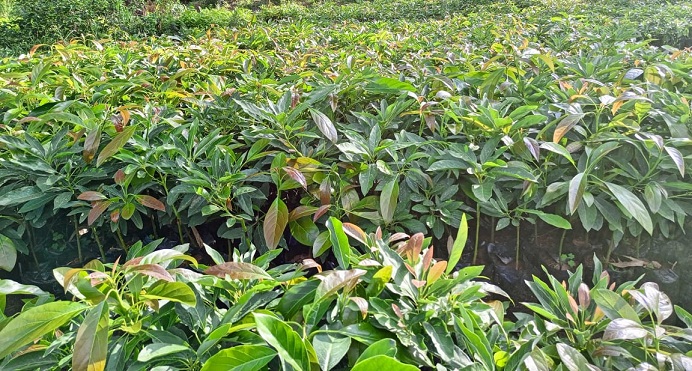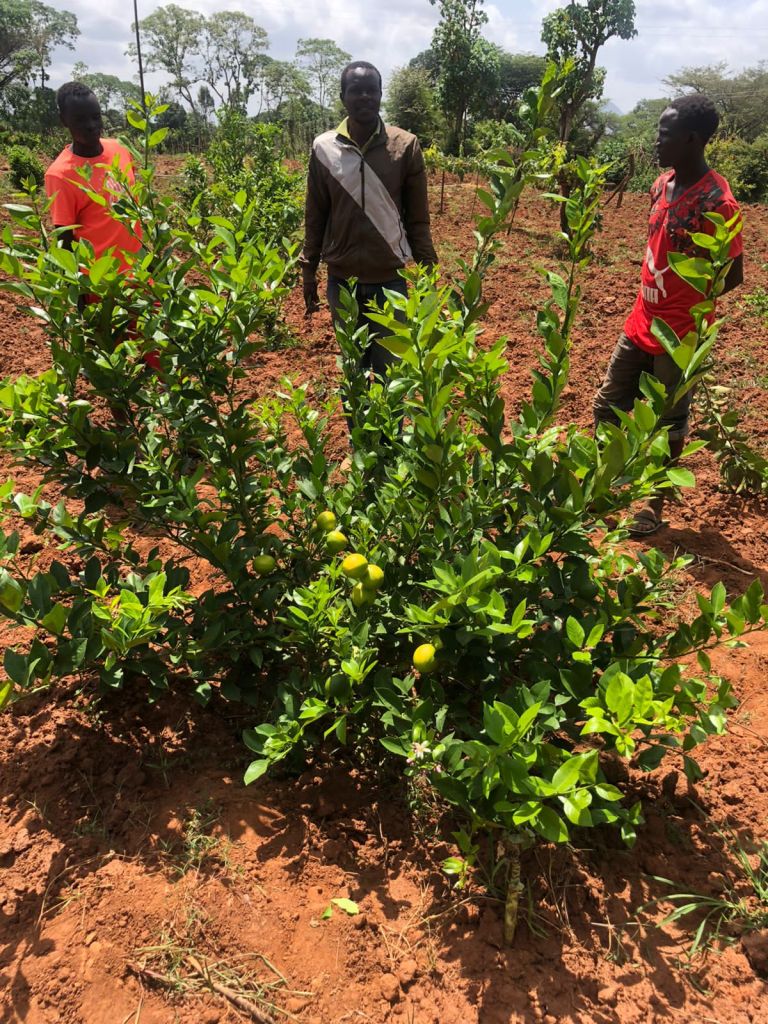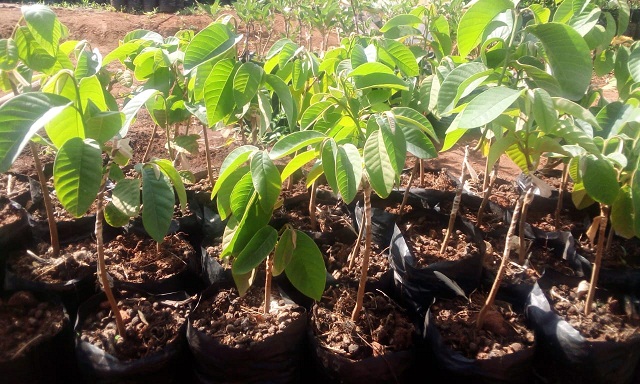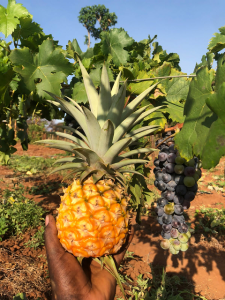How to grow avocado profitably in Kenya.
This note is about avocado business strategy, and strategies do change from time to time. Let’s ride!
1. Location.
Remember the 3 C’s of location.
a) Clusters-this has to do with capacity that will encourage exporting firms to come buy your product. Unless you are doing large scale,it is important to join forces with other farmers to meet capacity.
b) Climate should be well suited for optimum production.
c) Clients. Who are your customers/market? How will your products reach them?
2. Plant right varieties.
Know what Your market wants and plant those.
3. Proper tree care and management .
-Irrigation.
-Fertilization.
-Crop protection.
-Thinning and pruning
– Harvesting
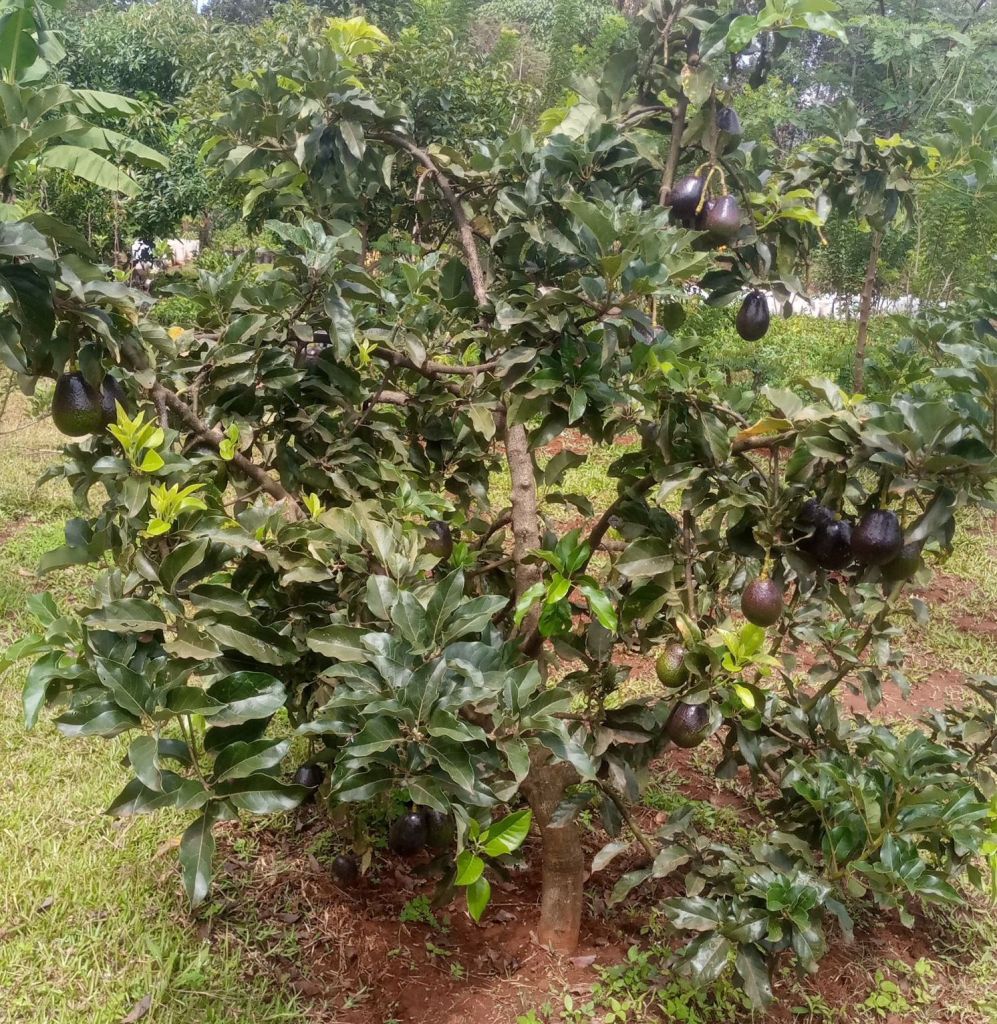
4. All year round production.
For You to have positive cash flow ensure all year round production. Plant a mix of early, mid and late fruiting seasons varieties.
5. You have to target both local and export market.
Hass, Fuerte and to some extent Pinkerton varieties are preferred for export market. Locally, size dictates the price. There are varieties that produce large size avocados of great taste that transports well, you need to plant those too.
6. Enrol on Etims @ kra
7. Consider branding Your products.
Using online and traditional marketing channels make Your brand standout and be the go to person for direct farm to plate organic avocados.
You as a farmer are the backbone of Your economy and the economy of our country. Planting is Caring, plant more !!!
Feijoa Fruit Seedling Cultivation Tips
Native to southern Brazil, feijoa is an exotic fruit of subtropical origins that can be readily grown in many parts of Kenya. This fruit has a unique flavor and aroma, and is attributed to having a number of medicinal values. Guavasteen and pineapple guava are some of its common names. It is highly nutritious when consumed fresh and luckily it is well adapted having the potential to do well in different parts of the country. This is reason enough for you to plant a few feijoas just as a custodian, for your own consumption and a source of nutrients.
If you opt to plant some, consider the following:
- Climate
Feijoas grow well in the tropics, subtropics and warm temperate areas. If guavas thrive in your location, feijoas will probably do well too. Temperatures between 15°C and 35°C , and an annual rainfall of 1000mm is desirable. You will have to water your plants especially when they are still young or when they show signs of water stress.
- Soil and planting
Most soil conditions are ideal for feijoa cultivation as long the soil drains well and rich in organic matter. Soil PH of 5.0-7.0 is desirable for optimum growth. Ensure your site receives enough sunlight; avoid areas that are prone to cold air and frost.
- Training and pruning
Train your feijoa tree early enough for upright growth and right tree shape. Prune you trees after harvesting season is over. You need a tree that is a metre above your height. This will enable easier maintenance and harvesting.
- Pests and disease
Feijoa even though resistant to pest and diseases, you still need to ensure your plants are well fertilized to avoid any nutrient deficiencies that may lead to disease and pest attack. Common pests include: fruit fly, caterpillars and scales. Leaf spot fungal disease is a major concern that we have not so far. Watch out for any signs of early disease and pest attack and act accordingly.
- Harvesting
Your plant is likely to start fruiting in the 3rd – 4th year of planting. The fruits do not change colour when ripe so it is hard to determine if they are ripe by observation. Fruit that are ripe naturally drop from the tree. Fruits that ripen on the tree will detach easily when harvesting. Plant It!!!
Hass Avocado seedlings
Hass Avocado cultivation
Avocado still is an important commercial fruit in Kenya. Local consumption keeps rising so is the export figures. More farmers are embracing avocado farming especially the Hass variety. For those targeting export market Hass avocado is the right variety to plant.
Here are a few tips on how to navigate your journey to ensure your crop meets the export standards.
- Climate
Climate greatly determines the quality of your fruit. 1000-1200 annual rainfall is sufficient. Due to irregular rainfall distribution, you should make arrangements to irrigate your trees. For proper growth and yield, temperature of between 25°C and 30°C is desirable
- Soil and fertilization
Your soil should have a good structure and well aerated. Avocados cannot withstand flooding or poorly drained soils. Soil PH of 5 to 7 is proper. Strive to keep your soil fertile and rich in organic matter. Results from your soil test analysis will inform you on the required type and amount of fertilizer to apply.
- Planting Hass avocado seedlings & pollination requirement
We strongly recommend you plant well established certified seedlings. Purchase seedlings that have a strong stem and are above knee height. When planting ensure the grafted union is well above the ground. There are different spacing regimens; 3m by 3m, 4m by 4m 5m by 5m,………. 8m by 8m. Embrace what suits you.
For pollination purposes it is important to ensure you have trees of two different flowering types; A and B. Hass exhibits type A flowers and is advisable to plant a type B variety such as Fuerte or Linda close by. For every 10 Hass avocado seedlings, plant 1 Fuerte seedling or Linda seedling. The presence of both flower types will enhance cross pollination encouraging optimal fruit development and improves production.
- Pruning and training.
It is important you train and prune your trees when they are still young to reinforce lateral growth and multiple structure branching. You are also to ensure there is no sucker growth below the grafted union. Later on trees are only pruned to remove excessive growth or any dead branches and to attain desired tree shape and height.
- Crop care and protection.
Contrary to popular belief that avocados are not susceptible to disease or pest attack, this is not the case. Pests of significant economic importance include:
- Fruit flies
- False codling moth
- Thrips
Major diseases are: Anthracnose, scab, stem end rot, root rot, bacterial canker
Take preventive measures to minimize cases of disease or pest attack. When planting, make sure you plant suitable and healthy seedlings that are free from disease. Embrace good growing and sanitation practices. These include:
- Using pheromone and sticky traps to monitor and reduce flying pests.
- Mitigate any attacks using approved bio pesticides and fungicides
- Proper weed control and mulching
- Irrigate your trees on a need basis
- Ensure your trees are well fertilized
- Use foliar spray to address any micro nutrients deficiencies especially boron and zinc
- Harvesting
Before harvest, it is important to assess the maturity of the fruit. Avocado fruit matures on the tree but ripens off the tree. Maturity is estimated by the percentage of dry matter in the fruit; a minimum of 23% dry matter is acceptable for Hass avocado. The ministry of agriculture has enforced specific timelines when avocados for export are harvested to avoid the harvest of immature fruits. Get technical advice on when and how to harvest your avocadoes. Ensure harvested fruit is handled with care to minimize fruit damage.
- Marketing your crop
For new small scale farmers; those who have 5-20 trees, lack of capacity will be a major challenge. There is need for small scale farmers in avocado growing counties to encourage one another by forming clusters that will boost production. Quality of your product will determine your access to the export market. You will be doing a good job if more than 80% of your produce is accepted for export.
As a dedicated farmer you should ensure that your fruit possess the following quality attributes:
- Clean, looks fresh and in good shape.
- Free from pests
- Have no skin defect or any visible damage
- No internal defects
- Free from any foreign smell or taste.
- Of great taste when ripe
If farmers can meet capacity and the quality attributes above mentioned, finding market and a good price for their produce will be much easier. Onward ever
Dwarf Guava Cultivation
Guava is one of the most important and popular fruit in Kenya but also one of the most overlooked fruit type. Commercial guava orchards are a rare sight, a majority of farmers plant a few trees or rely on guava trees that grow wildly in their home forests. Here are some of the reasons why you should plant guavas in your orchard:
- Low cost of production, it needs less fertilizer, irrigation & plant protection.
- High nutritive value; rich source of vitamin A & C, calcium, phosphorous and iron.
- Availability of dwarf varieties which produce fruits with less seeds and more flesh; ideal for commercial cultivation.
- Guavas are hardy and give an assured crop with minimal care.
Factors to consider before planting:
- Climate & Soil
Guava performs well in both tropical and subtropical regions that receive an annual rainfall of 1000mm. Temperatures that range between 15°C and 35°C are ideal for optimum growth and development. Guavas are more drought resistant and can tolerate temperatures of up to 45°C.
- Soil requirement & fertilization
Being a hardy crop, guavas thrive in all soil types that are not prone to waterlogging. Soil PH of 5.0-8.5 is suitable for guava cultivation. For maximum production ensure your soil is rich and high in organic matter. Guavas grow fast and are heavy feeders therefore manure application is desired from time to time. Fertilizer application will be determined by the age of the tree, soil status and your management practices.
- Irrigation
Young seedlings need regular irrigation in instances where there is no rainfall. Mature tree are irrigated on a need basis when trees show signs of stress or when fruiting to avoid excessive fruit drop.
- Training & Pruning
Prune to shape your trees and maintain desired tree height. Dry, damaged or diseased branches should be removed. Train your mature guava trees by bending the shoots to activate dormant buds and induce flowering
- Plant protection
Guavas are rarely attacked by pests and diseases but it is still important to ensure your plants are healthy and well protected against any attacks. Major pests include: fruit fly, scales and mealy bugs. Diseases to watch out for are: Anthracnose, guava wilt and fruit canker.
- Harvesting
You can start harvesting your guavas from the third year onwards. Yield varies depending on variety, age of tree and orchard management practices. Guavas bruise easily, harvest with care to avoid any damage on the fruit. They can be consumed fresh or blended to produce highly nutritious juice.
Grafted Lemon Cultivation
Lemon is one of the important fruit among citrus fruits. This is a popular and well known fruit among Kenyans hence can be useful to you as a valuable cash crop and as a source of important nutrients. Lemon cultivation can be profitable to home gardeners and small scale farmers who have minimal land. 2-10 lemon trees if well taken care of is sufficient for you to be able to sell fruit in small quantities direct to neighboring consumers or in wholesale quantities to fruit vendors.
Location plays an important role when setting up your orchard. This entails climatic conditions of your area, exposure to sunlight, your soil type and also nearness to the market. Here are some of the factors you should consider when cultivating lemons:
- Climate
Tropic and subtropical regions are suitable for lemon cultivation. They are grown in both dry and humid atmospheres. Lemons thrive in arid and semi-arid areas as long as they receive sufficient water. Locations that are exposed to very low temperatures should be avoided because lemons are sensitive to cold. Temperature of 25-35°C is satisfactory for lemon growth. Excess temperature above 40°C might hamper growth.
- Soil
Lemons as most citrus trees grow well in a variety of soils. Avoid planting lemons in wet soils that are susceptible to waterlogging. Deep fertile well drained soil is suitable for optimum production. Soil PH between 6-7 is sufficient for lemons to thrive
- Propagation & planting
The common propagation method is from seed. Lemons can grow to maturity from seed but they take more years to start fruiting and will produce fruits highly variable in quality. For proper production ensure you plant one year old grafted lemon seedlings. Plant your seedlings at the beginning of the rainy season. A spacing of3- 5 metres between plants is ideal. Size of the hole will depend on your soil type; dig deeper holes if your land has a hard pan beneath the soil.
- Varieties
Ensure you grow a variety that grows and fruits well locally. We have five main varieties that we grow and proven their viability for both subsistence and commercial use.
- Genoa
- Lisbon
- Meyer
- Eureka
- Sour lemon
- Rough lemon
- Fertilization & tree care
After planting your grafted lemon seedlings, top dress using farm yard manure. It is important to test your soil that will inform you on the needed ratios of major nutrient elements. Note that fruit trees require different fertilizer application at different growth stages. Nutrient elements that cannot be obtained from the soil can be supplied by foliar sprays. Other practices like training and pruning are important to maintain trees shape and structure.
- Pest & diseases
Ensure to observe high hygiene standards and keep your plants healthy to minimize pest and disease attack. Prevention is better than cure; your plants will not benefit from a good pest control program if other management practices like proper fertilization, irrigation & tree care are neglected. You will not achieve full productive capability if you neglect pest and disease control measures.
Major diseases include:
- Scab
- Melanose
Most injurious pests to note are:
- Aphids
- Fruit flies
- Moths
- Mites
- Scales
- Thrips
- Mealy bugs
- Harvesting
You will start harvesting your lemon fruits from the third year, grafted seedlings take 2-3 years to start fruiting. Once harvested lemons have a long shelf life and with proper storage can last up to a month increasing the percentage of juice content. Lemons varieties with green peel keep longer than those with yellow peel. Yield and quality vary widely depending on the management practices. Max out your farming! Bless
Grafted Custard Apple Cultivation in Kenya
Custard apple is among fruits that do well in the tropics and can be grown successfully in most parts of the country. Custards are delicious mainly consumed fresh when ripe or can be baked on fire when unripe. This fruit is gaining commercial significance because it is rich in nutrients that boost your immune system. We have identified grafted varieties that produce well sized fruits of good quality that can be cultivated commercially. Our aim is for farmers to produce high quality marketable fruit. We hope this post will expose you to the basic knowledge of what governs custard apple cultivation and will encourage you to plant a few custards.
- Climate and soil requirement
Custards prefer warm climate with high humidity. Dry climate is ideal during flowering and high humidity helps aid fruit set. They are relatively sensitive to very low temperatures. An annual rainfall of 600-800 mm is adequate for proper growth. With the changing weather patterns trees should be irrigated on a need basis when rainfall is not sufficient. Custard apple can be grown in a variety of soil types from clay to sandy but for optimum production, deep well drained fertile soil is desired. A soil PH of 6.0-6.5 is proper.
- Propagation
Most of the trees planted by farmers are propagated from seed that takes long to start fruiting, produces non-uniform inferior fruit quality and makes it hard to realize the desired true to type fruit. Therefore grafted custard apple seedlings are ideal for the production of high quality uniform fruit. Our custard apple plants are propagated by grafting using scions and seed for rootstocks selected from trees of proven performance. Grafted plants take 2-3 years to start fruiting.
- Planting and fertilization
A spacing of 5 by 5 metres is recommended in commercial orchards. However with proper pruning and training, a spacing of 3 by 3 can be implanted in home orchards. Ensure your chosen location receives adequate sunlight. A fertilization program should be informed by the soil and plant nutrient requirement. Avoid applying fertilizer throughout the season without knowing whether the plant or soil needs it or not. Conduct soil tests and leaf analysis to monitor nutrient levels and apply only required amount of fertilizer. This in turn reduces fertilizer cost and improves crop yield and fruit quality.
- Irrigation
Water stress during the development of the plant greatly affects fruit size, yield and quality. For good orchard performance a good irrigation and monitoring system is essential. Avoid under watering or overwatering. When irrigating, your goal is to provide the required amount of water when needed and avoiding any water wastage. It is important to have a schedule that informs you when and how much water your fruit trees need.
- Pruning and training
There are several benefits of pruning and training your fruit trees, these include:
- Controlling tree size.
- Making the fruit tree strong and well balanced.
- For easy penetration of sunlight and sprays.
- Pruned and well trained trees produce high quality fruits.
- Allows easy access when harvesting.
You should do more research on the different pruning and training methods and embrace what suits you.
- Pests and disease management
When it comes to pest and disease attack we do believe prevention is better than cure so should you. The following should be considered;
- Plant healthy disease free seedlings.
- Use a variety resistant to major pests and diseases.
- Avoid water stress, irrigate fruit trees as required.
- Apply adequate manure and biofertilizers, excess or low application both make fruit trees. susceptible to pest and disease attack.
- Observe high phytosanitary standards.
Important pests that are likely to attack custards in Kenya include;
- Fruit fly
- Mealy bugs
- Scales
Diseases;
- Leaf spot
- Anthracnose
- Black canker
- Harvesting
You can harvest between 100-150 fruits from a mature custard apple tree. Fruits are handpicked at the correct stage of maturity. It is advisable to pick the fruits before they are ripe to allow them ripen off the tree. Store the fruits in a cool place to slightly increase shelf life of the fruits.
We are always there with you in the journey of fruit cultivation to provide technical support and guidelines to ensure you are successful in your venture.
Grape Cultivation in Kenya
Grapes are mostly grown for wine production, raisin making or for table purpose to be consumed fresh. There are a few farmers and entities engaging in commercial grape cultivation for wine production. A good number of small scale farmers grow a few vines for personal consumption. Kenya has not yet realized its full potential when it comes to commercial grape cultivation despite the fact that this crop can do well in different parts of the country. There are several counties in Rift valley, Nyanza, Eastern, Central and western province that stand a chance of becoming grape producers. With proper county government support and better grower education farmers can produce quality grapes that meet market standards and capacity.
This post is for you who is interested to plant a few vines for own consumption. We will take you through the basics of grape cultivation and the right varieties to plant.
- Climate
Grape is successfully grown in areas that experience temperature that range from 15oC- 40oC. They generally require hot and dry climate for proper growth and fruiting. An annual rainfall of 900mm is ideal but should be supplemented with irrigation in case rainfall is not well distributed throughout the year. On the contrary, rainfall during flowering and fruit ripening might lead to the spread of downy mildew disease.
- Soil
Although grapes are well adapted to a variety of soil type they prefer deep fertile soil with good drainage, low salinity and PH range of 6.5-7.5. Grapes like most fruit trees are prone to waterlogging; your soil should have good water holding capacity and devoid of any hard pan.
- Propagation, Planting & fertilization
You can get grape seedlings that we propagate by cuttings or grafting. We graft desired varieties on dogridge rootstock. Grafting increases vine life, fruit yield, plant vigor and takes 2-3 years for new vines to begin bearing grapes. Plant your grape seedlings in an area that receives adequate sunlight. Observe a spacing of 3 metres between plants and 2.5 metres between rows. We encourage the use of farmyard manure and biofertilizers to fertilize your vines. Foliar sprays can also be used to supply micro nutrients. Your fertilization program should be informed by soil and leaf analysis.
- Irrigation
Irrigate your vines on a need basis. It is important to note that grapes require more water during berry growth and less water during fruit bud formation and when the fruits are ripening.
- Varieties
You should probably grow table grapes for personal consumption. The table varieties that we grow under organic cultivation are;
- Thompson seedless
- Red glode
- Autumn royal
- Flame
- Maroo
- Alexandria muscat
- Italia
- Training and pruning
To increase productivity, your grapevines should be well trained and pruned. The mode of training and pruning is determined by the growth habits of your vine. You should exercise much care and precision when pruning. Poor pruning or lack of it leads to poor fruit set. Do more research to up your pruning skills; there are many videos online that will expose you to the different types of training and pruning grapevines.
- Pest and diseases
Ensure you implement plant protection measures to ensure your vines are free from pests and diseases.
The major diseases affecting grapes are;
- Powdery mildew
- Downy mildew
- Anthracnose
Major pests include;
- Thrips
- Mealy bugs
- Leaf hoppers
- Harvesting
Grapes hardly ripen off the tree, so it is proper to harvest them only after ripening. Grape berries kept at room temperature can last a week without spoilage. Different varieties fruit at different time therefore with proper planning and timing you can consume your home grown grapes for the better part of the year. Keep planting!
Dragon Fruit cultivation in Kenya
Dragon fruit is a vine-like climbing cactus that serves both as a fruit crop and an ornamental plant. Dragon fruit is mostly eaten raw as fresh fruit. It can also be processed into juice, wine and jam. Dragon fruit cultivation is picking up in the country. We have different categories of farmers cultivating this fruit crop;
- Those who plant mainly for value addition especially wine.
- Farmers who sell their produce to fruit vendors or directly to consumer
- And there those who plant for own consumption
This post is mainly targeted for you who wish to cultivate a few plants for your nutrient requirement. There many reasons for you to have this plant in your garden;
- Dragon fruits are highly nutritious
- Low maintenance cost
- Minimal after care
- can be planted in area that has limited space
- dragon fruit is a fast return perennial fruit crop with production expected from 18-24 months after planting
- Once grown you can harvest for more than 20 years

The major constraint is the use of trellises. Dragon fruit plants are vine-like and need support hence the need of posts either concrete or wooden.. This article will take you through the basics of dragon fruit cultivation that include; climate & soil requirement, propagation & varieties, planting & irrigation, plant care, harvesting.
- Climate & soil-Dragon fruit prefer tropic and sub tropic regions that have high temperature, 20-32°C is sufficient. You should plant dragons in well drained soils with high organic matter. Like most fruit crops it does not tolerate waterlogging.
- Propagation & varieties- Dragon fruit seedlings are mostly propagated by cuttings. There are five main dragon fruit types:
- Pink fruit skin with white flesh
- Red fruit skin with red flesh
- Red fruit skin with white flesh
- Yellow fruit skin with white flesh
- Yellow fruit skin with red flesh
- Planting & irrigation-For proper upright growth the plants need strong support structures. Concrete or wooden posts are mostly used. The supporting posts are placed in the middle of the planting hole well in advance before planting. For best growth and fruit production plant dragon in an area that receives enough sunlight and less wind. Dragon plants require less water compared to other fruit plants. They require frequent irrigation at the time of:
- Planting
- Flowering
- Fruit development stage
- And during hot dry climate
- Plant Care– These after care activities will ensure proper plant growth and fruit development.
- Fertilization-Dragon fruit demand for nitrogen is comparatively less compared to other fruit crops. You can grow them organically using compost and farm yard manure
- Pest & diseases management-there are fewer disease and pest attacks. As a good practice, prevention is better than cure. There may be cases of thrips, mealy bugs and slug attack. Be on the watch out for any early signs of attack and act to deter any attack. Anthracnose is the most significant disease.
- Pruning & training- prune your plant to remove all damaged or diseased stems. Ensure any stem that touches the ground is removed. Train the main stem and tie it to the support structure as the plant grows. Once the stem reaches the top, cut the tip to induce branching
- Harvesting– The fruits are likely to be ready for harvest 45-50 days after fruit set. Fruit ripen at different times and should be selectively harvested. You should carefully remove the fruits from the plant for they are easily damaged. The average fruit weight is 300 grams but with proper tree care and fruit thinning you can attain weight of between 850-1000 grams per fruit.
If you are entrepreneurial then dragon fruit could be an asset. But before heavily investing take time to do test plants and familiarize yourself with the cultivation process. Learn to do more using less, your establishment cost should be minimal-we can assist in this area. Have a clear road map of who your customers are and how your product will reach them. Is there market for the fruit? We cannot tell. We believe it is your work as an entrepreneur to find market for the fruit.
Grafted Dwarf Peach Seedlings
Peach cultivation in Kenya is still not widespread despite the fact that it can do well in various part of the country. We have not come across any farmer doing large scale commercial peach farming. In case you are doing peach commercially please let us know. The main challenge seems to be lack of the right low chill varieties that have commercial appeal. The common variety is the wild peach that produces smaller fruits that cannot compete with the imported varieties.
Main aim of this post is to enlighten you who wish to plant a few peaches for home use. We have put in the work and planted different low chill varieties adapted to the tropics. The few trees we planted in different locations are fruiting well. You will be taken through the basics of peach cultivation; right variety to plant, climatic conditions, soil & site, planting & irrigation, fertilization, tree care and crop protection.
Peaches do well in humid climate. The location should experience cold weather to meet the required chill hours. A temp of 17-32°C is desirable. The low chill varieties we have can do well in a majority of counties in the country. A soil ph of 5.5-6.5 is ok, adjust your soils to the required ph. Peach do well in almost all soil types other than heavy clay; they are highly susceptible to water logging. Therefore your soil should be deep, rich in organic matter and have perfect drainage.
You should plant peaches in an area that is exposed to full sunlight. Our custom-grafted seedlings are propagated through grafting using wild peach as rootstocks. When planting ensure the graft union is above the soil, 1-2 feet above. Dig a hole wide and deep enough to allow roots spread out. Irrigate your trees if there is no rainfall. To achieve well sized and quality peaches, irrigation is important. Irrigation should be cut back at the time of dormancy to harden the tree. This should also be done a few days before harvesting.
We strongly recommend you top dress fertilizer a few weeks after planting. Adding fertilizer in the planting hole deters the roots from completely spreading out in search of nutrients. Also manure added in the hole attracts termites which might injure the young tree. Ensure to keep your soil nutrient levels at the range required by the plant. Peach have a high demand for nitrogen and potassium. Rate of fertilizer application will be informed by soil test and leaf analysis.
To maintain your tree size and shape, it is important you prune and train peach tree as it grows. The best time to prune is when the trees are dormant. Your intention is to develop a tree with a well-balanced frame. This helps the tree have a strong branch structure that will manage to carry a good number of fruits. When the tree starts fruiting ensure to thin them by removing excess fruit. This improves fruit size and quality.
Integrated pest management approach is more sustainable because it stresses more on prevention. It is more eco-friendly approach for managing pest and diseases. As we, you should prefer to go the organic way and use bio pesticides as a last resort. Monitor for any signs of pest and diseases, and take proper steps to manage any pest/disease problem. Your trees will be more resistant if you keep them healthy and well fed by providing the necessary nutrients.
Your tree may start fruiting from the 2nd year but will reach peak production in year 5. A fully grown tree yields more than 50 kgs. For excellent eating quality, peaches should be harvested when they attain ripeness and are well coloured.
Challenge yourself and plant a few trees, ensuring a fruit tree is in the mix. This is a small action that leads to big outcomes. If you are blessed with rains and have access to water kindly plant trees in your plot/farm. Count your blessings and plant trees, there is a drought ravaging the country. There are people who wish to plant trees and grow crops but they have no water because the rains forgot to visit for two planting seasons. Fruitful season!!!!
.
Ecosystem Investing Through Sustainable Seed Finance
For the last 20 months we have dedicated our efforts on forming a fruit cultivation cluster of small-scale farmers in Trans-nzoia County. We are on the ground observing and listening to clients’ pain points with the intention of crafting solutions to enable them embrace profitable horticulture. As we were interacting with small scale farmers, one thing that came out clearly was that lack of capital, skills and technical know-how made it impossible for farmers to practice profitable horticulture. We are in the process of designing a product to help such farmers get certified fruit seedlings and technical support needed to practice fruit farming profitably. Land, labour and time to attend training sessions is all a farmer needs to provide. Our target main target crop is Avocado, both for local and export market.
Fruit cultivation, with proper management & marketing can be very profitable. From the onset one should be aware of the fact that; there are good years when you earn good money, there are mediocre years when you earn some money and there are years when you are likely to get nothing. A shrewd farmer should have strategies in place to absorb any shocks. Hence the need to develop a demo farm and form clusters of fellow farmers with an aim of sharpening each other’s skills through the exchange of knowledge & ideas. These will make fellow farmers well prepared to deal with any eventualities and craft local solutions without any great assistance from any quarters.
This pilot project targets 500-1000 farmers in Kitale and its surrounding environs to plant a total of 10,000 grafted avocado trees. Avocado cultivation has great challenges unknown to a new farmer. Our duty is to ensure such farmers learn from our mistakes instead of their own. We are envisioning starting a whole entity that provides sustainable and regenerative seed finance as we try to apply permaculture design principles to finance. The burning question is; How can a small farmer access loan/finance products that create and regenerate value rather than extract value? The idea here is to offer farmers a loan product that empowers them to be regenerative investors. We provide seedlings and will continue to provide support and training, and monitor the growth of the fruit trees to ensure that maximum benefit is achieved. The farmer in turn pays using part of the harvest, a given number of fruits per tree. Payment of our services will be tied on achievement of desired outcomes and not outputs. Planting the trees only will not guarantee payment, we must ensure there is real market where farmers will earn new income.
We are transitioning to full time extension service provider where the payment of our products & services will be determined by the achievement of outcomes. Capacity building and training of the farmers alone will not guarantee success, we must assure farmers of real market that will generate income. Despite the many challenges faced by small scale farmers, agriculture still remains the fundamental task essential for the survival of wo/mankind. Africa is largely tropical and subtropical, with proper strategies put in place fruit production can be a leading source of income.
A good number of African countries are encouraging their farmers to turn to fruit farming as a better source of income. Kenya is ahead of the pack when it comes to producing quality avocadoes, ranked closely with South Africa. We have received several hass avocado inquiries from Nigeria, Congo, Uganda, Tanzania, sierra-Leone & Rwanda. This indicates more countries are embracing horticulture to realize the ultimate goal of development which is a high standard of living for their citizens. In the coming years there will be great competition among African countries for the world market.
For Kenya, more acres of land are being converted into hass avocado orchards. In areas such as Uasin Gishu & Trans-nzoia, local governments are supporting farmers to transition to Avocado, coffee & macadamia cultivation. Such efforts are good for the growth of the industry but much need to be done to ensure we maintain our leading position. One strategic advantage will be in establishing processing firms in the various production regions. These will offer small-scale farmers ready market and avoid dependence on the export market.
Technical know-how and skills development will give us an edge. There is a lack of skilled wo/manpower in this sector hence the need for training & capacity building. Higher institutions of learning should come up with certified courses on horticulture targeting fruit production. Avocado is among the top export earners and deserves a customized course on avocado cultivation & management, processing & marketing. Leading avocado cultivation counties should ensure their local higher institutions’ of learning offer practical courses on avocado cultivation & management best practices. The many acres of avocado need competent local managers to deliver quality fruits that compete in the world market.
This project cannot be effective without local presence hence the need to acquire land or partner with farmers who are willing to set up demo farms that will be used as centres that will go a long way to implement our various project. Our Kitale demo farm is still under development and will be opened to farmers once we get the necessary certifications. It’s an acre and we have planted mostly avocado and other fruits such as apples, grafted lemon, persimmon, grafted pears, Litchi, grafted peach etc. We are also doing trials to see if grafted apricot, kiwi, grafted nectarine, dragon fruit and grafted grapes can do well in Trans-Nzoia. For prompt response reach us on +254715963005.

